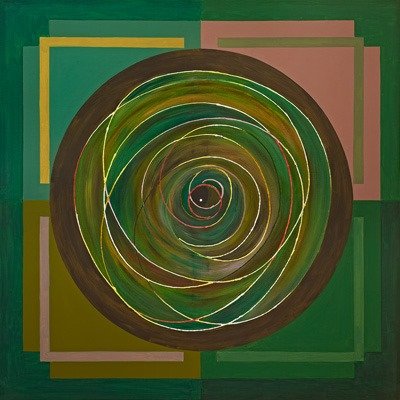Everyone talks about the spiritual effects of the Mandala, but what exactly is it and how does it affect us?
Mandala, derived from Sanskrit, translates to disc or circle. They rose back into popularity in the early 2000’s when they were used in art therapy, in colouring books and other exercises that help relieve stress and anxiety. The circular design, often includes a variety of geometric shapes and is related to spiritual growth and self discovery. It is known as a form of meditation to gain knowledge from within and promotes enlightenment.
According to Swiss psychologist Carl Gustav Jung, in Jungian psychology, the mandala is a symbol present in dreams that represents the dreamer’s search for completeness and self- unity. Jung is accredited to establishing the concept of Introvert and Extrovert personality.
Here are a few different forms of the mandala;
Sri Yantra – Featuring sixteen lotus petals that are circled by a very complex design of intermingling triangles, the Yantra is a symbol of awareness without dichotomy.
Garbhadhatu Mandala – This design is symbolic of the Buddhist Womb Realm, the dwelling place of several Buddhist deities from the Japanese and Chinese sects.
Nava Padma Mandala – This exquisite lotus design features a huge flower in the centre, and it is very popular in Parameshwara ceremonies.
Ganesha Yantra – Symbolic of the Hindu deity Ganesha, it features him sitting on a lotus revealing his true spiritual state.
The Trident Yantra – This design features a peace-symbolising lotus with a pointed trident to demonstrate the relationship between the phenomena of war and peace.(1)
Colours play an important role in creating Mandalas;
Red- Strength, high energy and passion Pink- Love, intuition and femininity
Orange- Creativity, transformation and self-awarenessYellow- Learning, wisdom, laughter and happinessGreen- Physical healing, psychic ability, love of nature and caring
Blue- Emotional healing, inner peace and meditation
Purple- All things spiritual
White- Spiritual focus
Black- Mystery, deep thinking and individuality (2)
The mandala has roots in both Buddhism and Hinduism, with its early uses being traced back to 1859, where it was said to be used in meditation.In Buddhism, mandalas are commonly used by tantric Buddhists as an aid to meditation.In Hinduism, the mandala, known as the Yantra, represented the abode of a deity. Although quite similar to a mandala, a Yantra uses a more limited colour palette and may incorporate a mantra into its design.
Variations of the mandala’s form can be found in various other religions and cultures, in Christianity, the Dromenon represents a journey from the outer world to the inner sacred centre where the Divine is found, the Mayan civilization presents calendars in the form of a mandala, and according to Persian Islamic theosophy, the Shamseh motif portrays the sun, a symbol of God and source of energy, in the centre with smaller circles surrounding it to symbolize God’s creatures.
Shree Yantra by Tanaji Awaghade
